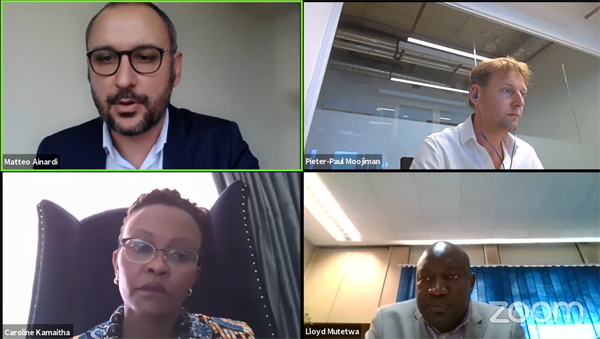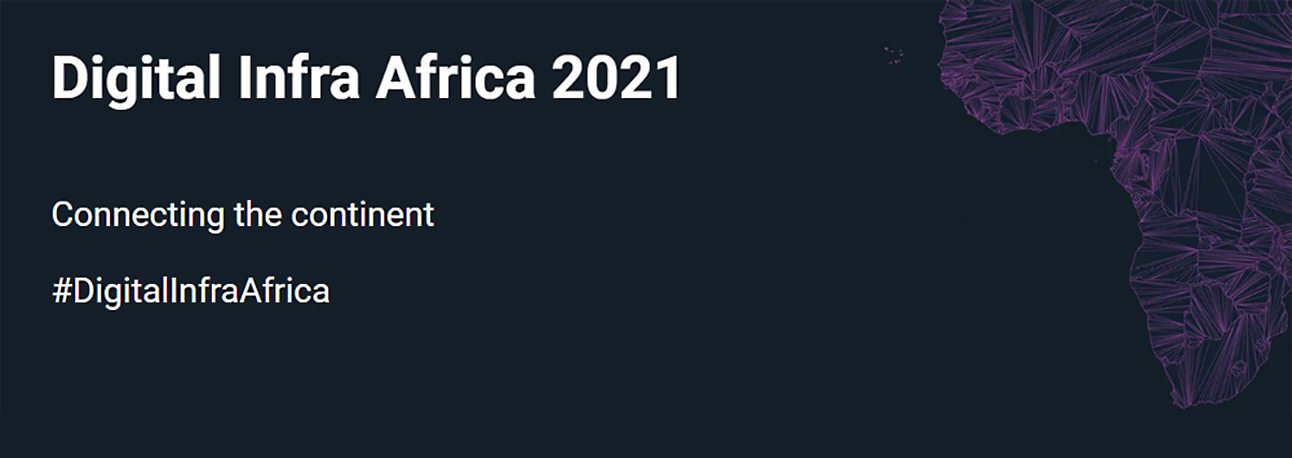Though access to the internet is growing around the world, we are still faced with the perennial challenge of a lack of connectivity to certain regions. This is especially true of the African continent, particularly Sub-Saharan Africa. To put it into perspective, a 2018 Pew Research Center report surveyed six Sub-Saharan countries and a median of only 41% said that they accessed the internet occasionally or used an internet-capable smartphone. Compare this to a survey of 89% of Americans in a similar 2018 survey. The difference is stark.
 Last week, our Regional Vice President for Africa, Pieter-Paul Mooijman, participated in Digital Infra Africa, an event that looked at projects and investments in African infrastructure. His panel, Satellite and Alternative Connectivity Solutions for the Hard-to-Reach Consumer specifically focused on the connectivity challenges faced by African countries and what needs to happen to ensure that broadband connectivity can be enjoyed by all Africans, not just those living in urban areas.
Last week, our Regional Vice President for Africa, Pieter-Paul Mooijman, participated in Digital Infra Africa, an event that looked at projects and investments in African infrastructure. His panel, Satellite and Alternative Connectivity Solutions for the Hard-to-Reach Consumer specifically focused on the connectivity challenges faced by African countries and what needs to happen to ensure that broadband connectivity can be enjoyed by all Africans, not just those living in urban areas.
Barriers need to fall
Lloyd Mutetwa, Wholesale and Carrier Services Head at Telone, a Zimbabwean service provider, described the difficulties that they face in trying to push much needed connectivity out to underserved areas of the country. For his company, the challenges are wide–ranging. This is a multi-faceted challenge. The sparse populations in rural areas mean that it is often not cost-effective to deploy terrestrial connectivity such as fiber and Average Revenue per User (ARPU) is low. Copper is no longer an option as deployments face problems with vandalism. The road infrastructure is not adequate enough to send out installers to deploy networks. Power is also a problem, as many sites lack any power at all. And the cost of satcom terminal equipment can still be too high for some communities to be able to afford it.
For children especially, this lack of connectivity is a barrier as they are unable to access the vast amount of educational content on the internet. The pandemic has exacerbated the gap between urban and rural areas and it’s a situation that’s repeated across the continent.
Satellite makes sense
Satellite makes sense for Africa. It’s easy and fast to deploy. It provides highly reliable and efficient connectivity. And the good news is that technological advancements in satcom are going to help to address the issues of affordability, bandwidth demand and performance. The advent of multi-orbit constellations brings huge promise to Africa as services become easier and more affordable to access.
Today, the internet is often viewed as human right. We need to connect people so that they can be part of the global community to learn, interact, buy and sell.
Satellite innovation in space, such we’ve seen with the O3b constellation from satellite operator SES, has been very important in bringing digital dignity to people across Africa. Caroline Kamaitha, Vice President, Fixed Data, Africa at SES explained how this innovation is being further escalated with the introduction of SES mPOWER, an NGSO broadband satellite system which promises to take affordability, reach and access to new levels. Low latency, more capacity and lower costs make these new constellations an attractive prospect.
Part of a wider ecosystem
From ST Engineering iDirect’s perspective, ground segment is critical and we are working hard to create the sustainable satellite technology to help connected the unconnected, but it is only one part of the story. We’re part of a much larger connectivity ecosystem, one that is rapidly changing. As we see the introduction of LEO and MEO satellites and hybrid solutions that bring together terrestrial and space-based connectivity, networks will ultimately become more complex. However, through technology innovation, investment and working with partners, we are enabling the ground segment to seamlessly integrate with all other access technologies. We are implementing 5G standards, virtualization and orchestration to enable the convergence of different access technologies, allowing service providers to choose the best option for them and to extend connectivity seamlessly into underserved regions.
Through satellite, affordable connectivity already exists in Africa but the technology is constantly evolving and the industry innovating to improve affordability in order to reach more customers.
As for affordability, the price point of satellite antennas has been falling as has the size of antennas themselves, reducing shipping costs and also import duties. That said, further technology innovation will be required to bring the cost of terminals down to acceptable levels and the industry is working hard to reach this point with the future looking very bright.
Today, the internet is often viewed as human right. We need to connect people so that they can be part of the global community to learn, interact, buy and sell. It’s critical that we consider the capabilities of the terminals and the modems, that will handle this broadband access so that we can provide services to even more verticals – for cellular backhaul, consumer broadband, cloud services and Over the Top (OTT) – all of which will meet the huge pent-up demand across Africa. Technology is also addressing issues of power consumption and efficiency as well as reliability.
Through satellite, affordable connectivity already exists in Africa but the technology is constantly evolving and the industry innovating to improve affordability in order to reach more customers. As access to the internet via satellite grows, this will push up bandwidth requirements further. We need to work together with the connectivity ecosystem to connect Africa, delivering a seamless, plug–and– play experience that can be enjoyed by all.
Learn more about how we’re connecting remote schools and other locations:
